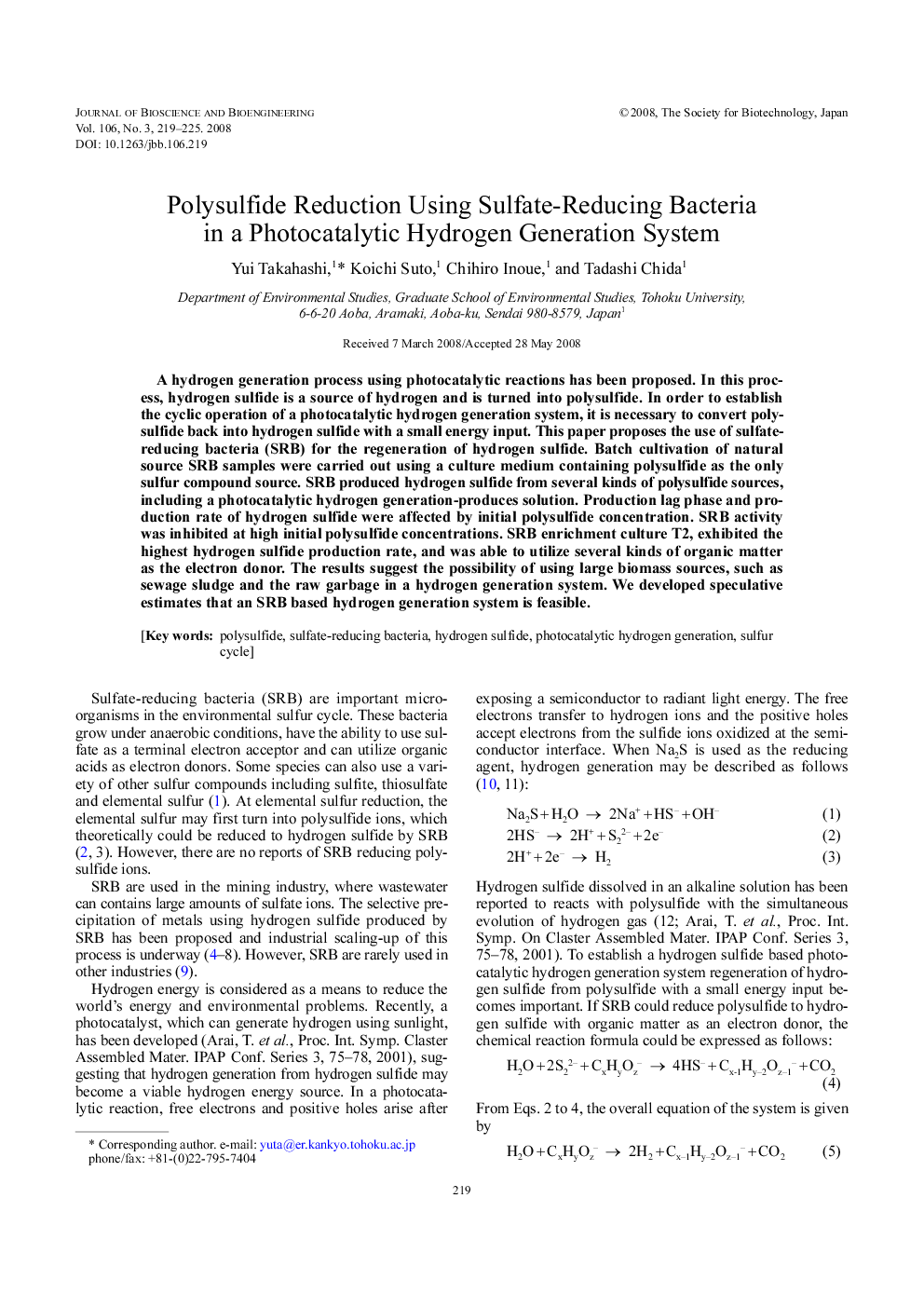| Article ID | Journal | Published Year | Pages | File Type |
|---|---|---|---|---|
| 22289 | Journal of Bioscience and Bioengineering | 2008 | 7 Pages |
A hydrogen generation process using photocatalytic reactions has been proposed. In this process, hydrogen sulfide is a source of hydrogen and is turned into polysulfide. In order to establish the cyclic operation of a photocatalytic hydrogen generation system, it is necessary to convert polysulfide back into hydrogen sulfide with a small energy input. This paper proposes the use of sulfate-reducing bacteria (SRB) for the regeneration of hydrogen sulfide. Batch cultivation of natural source SRB samples were carried out using a culture medium containing polysulfide as the only sulfur compound source. SRB produced hydrogen sulfide from several kinds of polysulfide sources, including a photocatalytic hydrogen generation-produces solution. Production lag phase and production rate of hydrogen sulfide were affected by initial polysulfide concentration. SRB activity was inhibited at high initial polysulfide concentrations. SRB enrichment culture T2, exhibited the highest hydrogen sulfide production rate, and was able to utilize several kinds of organic matter as the electron donor. The results suggest the possibility of using large biomass sources, such as sewage sludge and the raw garbage in a hydrogen generation system. We developed speculative estimates that an SRB based hydrogen generation system is feasible.
